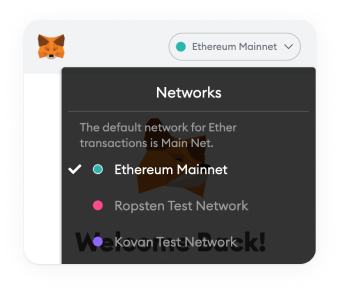Shanghai upgrade (core developers have started high-level planning for Shanghai upgrade, the specific release time is to be determined)
Ethereum underwent a London hard fork upgrade (block height 12,965,000), and this fork did not generate new tokens.
At around 6:12 pm, the Berlin hard fork was officially activated on block 12244000 of the main network. In the past week, the average computing power of the entire Ethereum network was 502.37 TH/s, and the average block generation time was 13 seconds.
Eth2 fully formed shards.
1. Eth2 phase 1: Shard chain; 2. Eth2 phase 1.5: The main network becomes fragmented.
The first part of Eth2 will be the beacon chain.
ETH released the main network deposit contract address: 0x00000000219ab540356cBB839Cbe05303d7705Fa. It needs at least 16384 validators before December 1, and a total of 524288ETH is locked in order to successfully start Pos mining.
The Ethereum development team expects to launch Ethereum 2.0 in July 2020.
Ethereum 2.0 phase 1 reached more consensus, and will start 64 shards and enter the Ethereum 1.5 phase.
The Ethereum 2.0 technical specification released version 0.12.0, which updated the BLS signature algorithm specification to use the BLS draft 2 launched by the standardization organization "Internet Engineering Task Force" (IETF).
The Ethereum 2.0 construction team Prysmatic Labs released the Ethereum 2.0 mainnet configuration testnet Topaz.
Ethereum 2.0 released version 0.10.0 of the code specification v0.10.0 of the phase 0.
Ethereum completed the "Muir Glacier" hard fork upgrade at block height 9,200,000.
The Ethereum mainnet completed the "Istanbul" hard fork upgrade at block height 9069000.
At 03:52 on March 1st, the Ethereum block height reached 7,280,000, Constantinople & St. Petersburg (Constantinople & St. Petersburg) were upgraded, and the Ethereum hard fork was successful. At the same time, the block reward is also reduced to 2 ETH.
Ethereum will undergo a hard fork upgrade of Constantinople (Constantinople) (block height 7080000). On January 16, the upgrade was delayed due to a security breach. On January 17, the block with a height of 7,080,000 has been dug out.
Ethereum Swarm client v0.3 (PoC3) released.
Ethereum founder Vitalik announced the Ethereum 2.0 roadmap, and the sharding mechanism is the core of collaborative improvement.
Due to "misoperation" by developers and users, a total of 930,000 ether coins (valued at more than 154 million US dollars at the time) were frozen and have not been recovered so far.
The Ethereum Developers Conference (DEVCON 3) was held in Cancun, Mexico, and lasted for 4 days. At the meeting, Vitalik Buterin raised the issues of Casper, Sharding and some other protocol updates, officially bringing sharding into people's field of vision.
The Ethereum mainnet completed the Byzantium hard fork upgrade at block height 4370000. Marks the opening of the third phase of Metropolis (metropolis).
The founder of Ethereum proposed the expansion plan of Ethereum - Plasma. With the increase in the number of DAPPs on the mainnet of Ethereum, expansion and performance have always been the main issues affecting the use of ETH. Ethereum is expected to solve the performance problem through sharding technology, and solve the Ethereum expansion problem through Plasma.
Hackers attacked and stole more than 150,000 ether coins, causing a loss of about $30 million based on current prices.
Huobi and OKCoin, the second of China's three major bitcoin exchanges, officially launched Ethereum.
The Enterprise Ethereum Alliance (EEA) added 86 new companies.
The Enterprise Ethereum Alliance (EEA) was announced, with members including JPMorgan Chase, Microsoft, and Intel.
Ethereum held its third developer conference (DEVCON 2) in Shanghai.
Ethereum has successfully implemented a hard fork, forming two chains, one is the original chain (Ethereum Classic, ETC), and the other is the new forked chain (ETH), each representing different community consensus and values.
The DAO, a decentralized autonomous organization on Ethereum, was hacked. Hackers exploited a recursive loophole in The DAO code to continuously separate assets from The DAO fund pool; then, hackers exploited a second loophole in The DAO to prevent the assets from being destroyed after separation.
The DAO project started crowdfunding. The project token DAO, the crowdfunding period lasts for 28 days, and the token price is about 100 DAOs exchanged for 1 to 1.5 Ethereum. The DAO project raised a total of more than 12 million Ethereum, accounting for almost 14% of the total number of Ethereum at that time. At that time, it was worth more than 150 million US dollars, and more than 11,000 people participated in the crowdfunding.
(Pi Festival), Ethereum released the second phase of Homestead (Homestead).
The technology of Ethereum was recognized by the market, and the price began to skyrocket, attracting a large number of people other than developers to enter the world of Ethereum.
Ethereum smart contracts open the road to blockchain applications.
Ethereum kicked off its five-day developer conference (DEVCON 1) in London.
Ethereum Development Team Introduces "Difficulty Bomb" Mechanism
Ethereum started the Frontier (frontier) stage, and developers began to write smart contracts and decentralized applications on Ethereum to be deployed on the Ethereum real-time network.
The creation block of Ethereum was dug out, marking the official launch of the Ethereum blockchain.
The team released the last test network (POC9, there have been 0~8 test versions before), code-named Olymp.
Launch of the DEVgrants program, which provides funds for all contributions to the Ethereum platform and Ethereum-based projects.
Ethereum hosted its first small developer conference (DEVCON 0) in Berlin.
Released PoC6, which reduced the block generation time of the blockchain from the original 60 seconds to 12 seconds, and used a new protocol based on GHOST. This marks the progress of Ethereum's performance and provides a better foundation for DAPPs that later run on Ethereum.
Ethereum conducted a 42-day pre-sale of ether, raising 31,591 bitcoins, worth $18,439,086 at the time.
Stiftung Ethereum established in Zug, Switzerland.
Gavin Wood published the Ethereum Yellow Paper, which standardized important technologies such as the Ethereum Virtual Machine (EVM).
Ethereum released the third version of the test network (PoC3), and moved the Ethereum headquarters to Zug, Switzerland.
Ethereum's first proof of concept (Proof of Cocept 1, PoC1) was released.
Vitalik Buterin, the founder of Ethereum, released the first white paper of Ethereum and launched the project.
See More



























































































